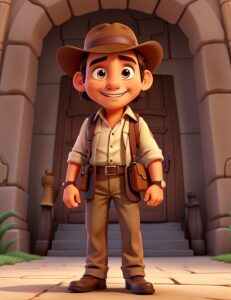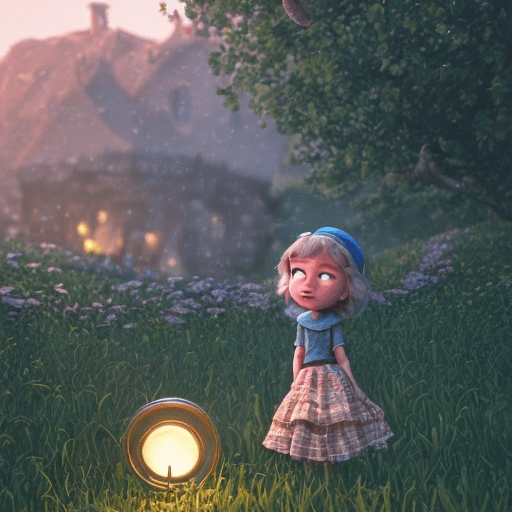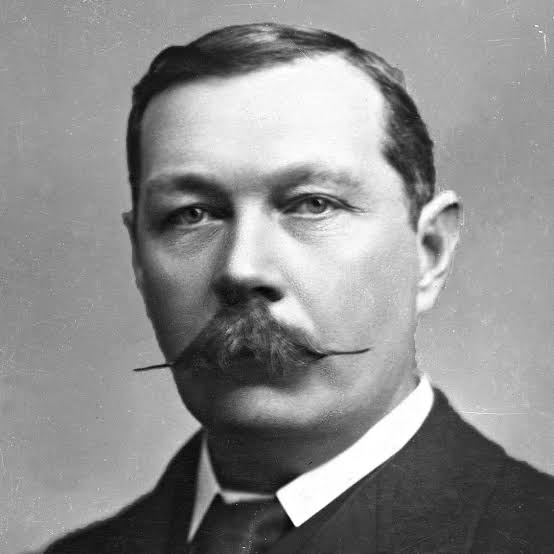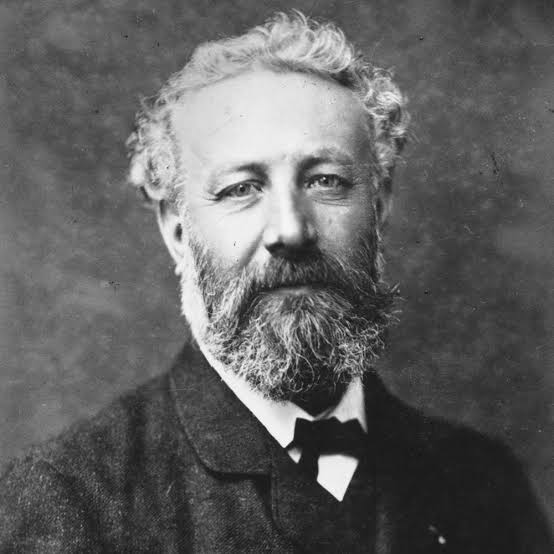Adventure is a genre of short stories that captivates the imagination, curiosity, and emotions of young readers. In an adventure book, young protagonists embark on thrilling journeys, often filled with excitement, danger, and discovery. This genre is particularly popular among kids for several reasons in shortstorieskids.com .
Firstly, stories of Adventure transport children to new and exciting worlds beyond their own, allowing their imaginations to soar. Whether it’s traveling to distant lands, exploring magical realms, or going on thrilling quests, these stories provide an escapism that triggers their creativity and expands their mental horizons.
Additionally, adventure stories appeal to children’s innate curiosity. These tales often involve mysteries, puzzles, or enigmas to unravel, encouraging kids to use their problem-solving skills and critical thinking abilities. This not only engages their minds but also fosters a love for exploration and discovery.
Choose your own Adventure Books Best Sellers
Action Adventure Short Stories Genre: Examples
Best Adventure Stories of all Time
Adventure Stories in English with Pictures
Adventure Short Stories Genre: Authors
Some of the famous authors in the genre of adventure stories books include:
1. Jules Verne: Verne is often considered the father of adventure literature. He popularized the genre with his imaginative stories set in distant lands and underwater expeditions. His most notable works include “Journey to the Center of the Earth,” “Twenty Thousand Leagues Under the Sea,” and “Around the World in Eighty Days.” Verne’s writings influenced subsequent adventure writers, and his themes of exploration and scientific discovery continue to resonate with readers.
2. Robert Louis Stevenson: Stevenson was known for his adventurous tales, incorporating elements of mystery and suspense. His most famous work, “Treasure Island,” featuring pirates, buried treasure, and a young hero, remains a classic in adventure literature. Stevenson’s vivid storytelling and nuanced characters paved the way for future adventure authors to explore complex themes within the genre.
3. Rudyard Kipling: Kipling’s writing often revolved around the British Empire and its colonial experiences. His most significant adventure work, “The Jungle Book,” introduced readers to Mowgli, a young boy raised by wolves in the Indian jungle. Kipling’s ability to transport readers to remote locations while addressing themes of identity and colonialism greatly impacted subsequent adventure authors.
4. H. Rider Haggard: Haggard’s works often delve into the mysterious and exotic, set in remote locations such as Africa. His most famous adventure novel, “King Solomon’s Mines,” follows a group of adventurers searching for a lost civilization and its hidden treasures. Haggard’s gripping storytelling and compelling characters influenced later adventure writers, inspiring them to create similar thrilling narratives.
5. Edgar Rice Burroughs: Burroughs is best known for his creation of the iconic character Tarzan, who was raised by apes in the African jungle. The Tarzan series became immensely popular, showcasing Burroughs’ talent for creating adventure-filled tales filled with danger, romance, and epic journeys. Burroughs’ writings inspired countless subsequent adventure authors, helping to cement the genre’s enduring popularity.
These authors contributed to the development and popularity of the adventure genre by captivating readers with their exciting narratives, exotic settings, and unforgettable characters. Their works showcased the spirit of exploration, the triumph of courage, and the allure of the unknown, capturing the imagination of countless readers and setting the stage for future adventure literature.
Adventure Short Stories Genre : History
The genre of Short Adventure Stories emerged in the 19th century, primarily in Western Europe and the United States. It was heavily influenced by the historical, cultural, and social factors of the time, including the expansion of colonialism, exploration, and the Industrial Revolution. These factors sparked a fascination with exotic locations, escapism, and the desire for thrilling and heroic narratives.
Some pioneers and innovators of the Adventure genre include Jules Verne and H. Rider Haggard. Verne’s works, such as “Around the World in 80 Days” (1873) and “20,000 Leagues Under the Sea” (1870), showcased incredible journeys and scientific exploration. Haggard’s novel “King Solomon’s Mines” (1885) popularized the Lost World subgenre and presented adventure narratives set in Africa.
Landmark works in the Adventure genre include Robert Louis Stevenson’s “Treasure Island” (1883), which established the pirate adventure archetype, and Rudyard Kipling’s “The Jungle Book” (1894), known for its tales of adventure and enlightenment in the Indian jungle. Other notable authors in the genre include Edgar Rice Burroughs, whose Tarzan series started in 1912, and Arthur Conan Doyle, who created the adventurous Sherlock Holmes detective series in 1887.
In terms of trends, the Adventure short stories for kids genre experienced a boom during the late 19th to early 20th century, partly due to growing literacy rates and the increasing popularity of serialized fiction in magazines. As the genre evolved, it diversified into subgenres such as survival stories, swashbucklers, exploration narratives, and more, catering to different reader preferences.
The Adventure genre continues to have a significant influence on literature, film, and popular culture to this day. Its themes of exploration, heroism, and escapism remain appealing, attracting audiences seeking thrilling and imaginative narratives.
Adventure Short Stories Genre: Characteristics
Adventure Stories is a genre that focuses on exciting, daring, and thrilling journeys or experiences. It often involves the protagonist venturing into unfamiliar or dangerous situations, facing challenges, and overcoming obstacles. The key characteristics of adventure include high stakes, unpredictability, and a sense of danger or risk.
Key Characteristics
- In terms of language, adventure stories use descriptive and vivid language to paint a picture of the settings and events. The plot typically follows a hero or a group of characters who embark on a quest or expedition. The pacing is usually fast-paced and filled with suspense, capturing the readers’ attention and keeping them engaged.
- Characters in adventure stories are often courageous, resourceful, and determined individuals who take on daring adventures. They may possess unique skills or abilities that help them overcome obstacles. Secondary characters can include companions, mentors, or antagonists who add complexity to the story.
- Setting plays a vital role in adventures as it often involves exotic or unfamiliar locations, such as jungles, deserts, or uncharted territories. These settings contribute to the atmosphere of adventure and provide opportunities for the characters to face various challenges and discover hidden treasures.
- Tone in adventure stories can range from light-hearted and humorous to intense and suspenseful. The tone often reflects the perilous situations the characters find themselves in, and it adds to the excitement and thrill felt by the readers.
- Typical themes in adventure stories include heroism, bravery, exploration, survival, and self-discovery. Adventures often highlight the triumph of good over evil and the importance of perseverance in the face of adversity. They emphasize the excitement of venturing into the unknown and the potential rewards that come with taking risks.
Adventure stories relate to the interests and needs of kids as they provide a sense of excitement, escapism, and exploration. They allow young readers to imagine themselves in thrilling situations and to experience a range of emotions vicariously. Adventure stories also teach valuable lessons about courage, teamwork, and resilience, inspiring young readers to face challenges in their own lives. Additionally, adventure stories can satisfy kids’ curiosity about the world and history by introducing them to various cultures, places, and events.
Adventure Short Stories Genre: Benefits
Reading classic adventure stories for children has numerous benefits. Firstly, it enhances their reading comprehension skills by exposing them to engaging and dynamic narratives. Adventure books often have exciting plots, unexpected twists, and diverse characters, which helps children develop their ability to understand and analyze complex storylines.
Reading adventure books expands kids’ vocabulary.
These books often contain rich and descriptive language, introducing children to new words and phrases. Through exposure to various styles of writing, kids can also learn different techniques for expressing themselves and improve their own writing skills.
Adventure books stimulate critical thinking skills in children.
As they follow characters through different obstacles and challenges, young readers are encouraged to think critically and problem-solve along with the protagonists. This helps them develop their analytical skills, logical reasoning, and creativity by forming connections between different elements of the story.
Adventure books broaden kids’ horizons and enrich their cultural knowledge
Besides developing cognitive abilities, these stories often explore diverse settings and cultures, exposing children to different perspectives and ways of life. By reading about various people and places, kids become more open-minded, understanding, and appreciative of the world’s diversity.
Reading adventure bedtime stories also fosters creativity in children
Exposed to imaginative settings, daring characters, and thrilling events, kids are inspired to think outside the box and let their own imagination soar. Adventure stories encourage them to invent new scenarios, create unique characters, and explore alternative worlds, promoting their own creative thinking and storytelling abilities.
Furthermore, adventure books can be highly motivating and empowering for kids
Reading about courageous and determined protagonists can inspire children to pursue their goals and dreams, showing them that they too can overcome challenges and achieve success. Adventure stories often depict characters who face difficult situations with bravery and resilience, teaching kids valuable life lessons and instilling a sense of empowerment.
In summary, reading adventure books for kids provides a wide range of benefits. It enhances their reading comprehension, vocabulary, and critical thinking skills, broadens their horizons, enriches their culture, and fosters their creativity. Moreover, adventure books motivate and empower children to pursue their goals and dreams, instilling valuable life lessons along the way.
Adventure Short Stories Genre: Tips
Tips and advice on reading adventure genre:
- Start by researching popular adventure novels or series to get a sense of the key elements, themes, and styles present in the genre.
- Look for books that have been highly recommended by readers or critics to ensure you are starting with high-quality examples.
- While reading, pay attention to the pacing, suspense, and action sequences that make adventure novels engaging and thrilling. Take note of how the author builds tension and creates a sense of danger.
- Challenge yourself to read a variety of sub-genres within adventure, such as historical adventures, survival adventures, or fantasy adventures, to expose yourself to different storytelling approaches and themes.
Tips and advice on writing adventure genre:
- Start by outlining your story, focusing on creating a strong central conflict that will drive the adventure forward. Consider obstacles, challenges, and twists that the protagonist will face along the way.
- Develop complex and relatable characters who will grapple with personal growth, moral dilemmas, or fears during their adventure.
- Incorporate vivid descriptions to bring the setting to life and immerse the reader in the adventure.
- Keep the pace fast by including frequent action and suspenseful moments while also balancing these with quieter, introspective scenes.
- Maintain a sense of believability within the fictional world you create. Research elements of the adventure, such as geographic locations or historical periods, to ensure accuracy.
Tips and advice on teaching adventure genre:
- Introduce engaging adventure books to your students and encourage them to choose their own adventure novels to read independently.
- Discuss the common tropes, themes, and elements present in adventure novels, such as a quest, a hero’s journey, or overcoming obstacles.
- Encourage students to think critically about the choices characters make during the adventure and the consequences of those choices.
- Encourage and guide students in creating their own adventure stories, emphasizing the importance of strong character development, pacing, and conflict.
- Incorporate group discussions, role-playing, or creative projects that allow students to explore the adventure genre beyond just reading.
Improving skills and techniques in adventure genre:
- Read a variety of adventure novels from different time periods and authors to expose yourself to various styles and approaches.
- Join a book club or online community where you can discuss adventure novels with fellow readers and gain different perspectives on the genre.
- Analyze the pacing and structure of your favorite adventure novels, noting how the author builds suspense or develops characters.
- Practice writing your own adventure stories and seek feedback from others, whether through workshops, writing groups, or online platforms.
- Continuously challenge yourself by experimenting with different sub-genres or settings within the adventure genre to expand your writing skills.
Engaging, challenging, and supporting children through the adventure genre:
- Select adventure novels that feature diverse protagonists and settings to ensure students can see themselves reflected in the stories.
- Incorporate active reading strategies, such as visualizing or predicting, to enhance engagement with the adventure novel.
- Assign creative projects that allow students to reinterpret or extend the adventure story, such as creating alternative endings or designing a new adventure for the protagonist.
- Encourage students to participate in discussions where they can share their thoughts, opinions, and reactions to the adventure novel.
- Provide support and resources for struggling readers, such as audiobooks or graphic novel adaptations, to help them access and enjoy adventure stories.
Adventure Short Stories Genre: Resources
1. “The Adventure genre” by Laura Vivanco – This book provides an in-depth analysis of the adventure genre, exploring its history, key themes, and characteristics. It also includes a comprehensive list of adventure novels and authors.
2. Adventure Writers – This website is a valuable resource for adventure writers, offering tips, advice, and articles on crafting engaging adventure stories. It also has a forum where writers can connect with one another and share ideas.
3. “The Ultimate Adventure Writer’s Guide” by Paul A. Wunderlich – This guide offers practical advice on writing in the adventure genre, including how to develop compelling characters, create tension and suspense, and construct thrilling plots. It also includes writing exercises and examples from renowned adventure authors.
4. Adventure Gamers – If you’re interested in adventure video games, this website provides reviews, news, and features on the latest adventure games. It offers insights into storytelling techniques used in interactive adventures and showcases upcoming releases.
5. “The Adventure Continues: A Guide to Writing Your Own Adventure Stories” by Jeff Grubb – Perfect for aspiring adventure authors, this book guides you through the process of creating your own adventure story. It covers everything from world-building and plot development to crafting realistic dialogue and pacing your narrative.
6. Adventure Cycling Association – If you’re interested in adventure travel and cycling, this website offers a wealth of information on bicycle touring. It features maps, gear guides, trip reports, and resources for planning your own adventurous cycling journeys.
7. “Into the Wild” by Jon Krakauer – This non-fiction book tells the true story of Christopher McCandless, a young man who gave up everything to embark on an adventure into the Alaskan wilderness. It explores themes of survival, self-discovery, and the allure of the unknown.
8. National Geographic Adventure – National Geographic’s adventure section features articles, interviews, and photographs that showcase incredible real-life adventures around the world. It’s a great source of inspiration for adventure writers and enthusiasts.
Remember to check the credibility and relevance of sources and tailor your research to your specific area of interest within you are looking for adventure stories in English.






